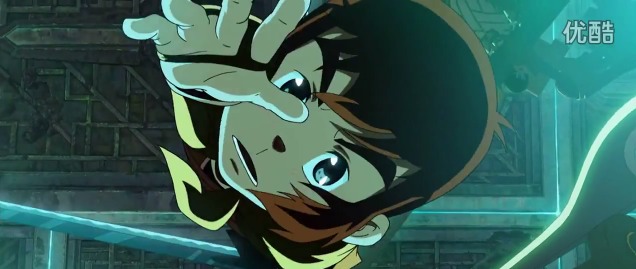
Copyright Vasoon
Chinese Animation moves towards a global market
Of all the things that drive the masses towards film, China is one of them. International co-productions, and future box office dominance are factors that have made China an integral part of film studios' strategic planning worldwide.
Despite China's monumental gains, Entgroup Consulting has reported China's overseas earnings dropped by 47% in 2012, revealing China's weakness in producing internationally viable movies. While some local film influencers believe China's film efforts should primarily focus on their local market, others believe going global is key. Massive Chinese studios, such as Bona Film Group, are eager to access an international audience and produce global blockbusters. In order to gain access to screens across the world, China's animation industry may hold the key to captivate a worldwide audience.
China currently holds the title of being the largest producer of outsourced animated work. The industry's total revenue in 2012 was an estimated ¥32.1 billion. Although the revenue gained from Chinese animated films only accounts for 7% of China's box office, the total revenue jumped nearly 25% in comparison year-on-year. The jump in revenue has caught the attention of Chinese citizens, sparking dozens of new animation studios to set up shop. As these new studios attempt to compete against powerhouses like CCTV Animation, Creative Power Entertaining, Shanghai Animation Group, and Alpha Animation, industry insiders speculate who will be "China's Pixar".
Between low labor costs, rapid technological development, and a surplus of animators, Chinese studios can satisfy viewers with high quality animation at competitive rates. Although some question China's ability to produce high quality animation, it is important to note that most Chinese studios have already managed to establish overseas relations for outsourced animated content. Chinese studios produce about 266,600 minutes of animation every year, providing more than 60% of the animation featured on television.
Animated features can also address cross-cultural problems in films, with global appeal. Animated features, unlike live action, remove subtitles and cultural baggage, two factors that commonly turn away movie goers worldwide. In fact, three of the top ten highest grossing features in 2013 were animated features, revealing the cross-cultural capability of animation.
The government has also stepped in to aid the industry. As the government attempts to increase their soft power abroad, they have turned towards animation has a vehicle to push their culture outside of the country. The most recent five-year plan encourages growth of the animation industry by providing tax incentives, increased industry investments, construction of animation parks and stronger copyright laws. However, the government's involvement in the industry has not been all beneficial.
Some of the tactics used by the government has hindered growth and interest abroad. In an attempt to protect local studios from Hollywood blockbusters, the government has delayed feature releases, reduced features' stay in theaters or flat out denied features into Chinese theaters. These tactics manipulate the studios' revenue abroad and does little to improve international relations. Some of the blockbusters which were victims of China's protectionist policies include "The Croods", "The Amazing Spider Man" and "The Dark Knight Rises".
Creativity is the most evident of the problems within the industry. Despite the amount of outsourced animated work China completes, audiences, both domestic and abroad, often summarize Chinese animated features as poorly written and thinly veiled imitations. A smorgasbord of factors can attribute to China's difficulty to create imaginative features, including, but not limited to, weak creative education/training, no defined television/film classification system and loose piracy laws.
Raising private capital for animated features also proves to be a challenge in China. Investors are still unsure of how to speculate success in animated features. Industry insiders say investors are not as likely to invest in animated features because most are looking for immediate gains. Investors’ eagerness for quick returns ends up affecting the beginning stages of an original animated project. While US powerhouse studios are able to devote up to half of their resources on pre-production, Chinese studios invest a much smaller portion in comparison.
Wu Hanqing, CEO of Vasoon Animation states, "Compared to games, more capital for the pre-production period of original content development is necessary, however this increases the length of time for an investor's ROI. "
Vasoon Animation is an animation studio headquartered in Beijing. Founded in 1992, Vasoon holds the title of China's longest running private animation studio. The studio produces feature films, artistic shorts, and television shows, including the locally praised "Kuiba" animated series. The first "Kuiba" feature was released in theaters in 2011 and the sequel, "Kuiba II" was released in 2013. Vasoon Animation, like many Chinese studios, are eager to break out of the domestic market and expand their brand to a global audience.
Wu adds, "Investment and collaboration is a hot topic in this industry. Investors' need to look at future growth and develop a strategic collaboration instead of focusing on quick returns."
Although China's animation industry has experienced significant growth, original animated Chinese content will likely not captivate an international audience until the creative and industry infrastructure challenges are solved. As China continues to grow global influence through film, and Hollywood continues their pursuit of box office glory, CUNY Professor Ying Zhu best describes the relationship as, "an intriguing case study of political, cultural and economic rivalry and cooptation on a global scale."





















